There’s a particular kind of hope that comes with deciding to build a pool.
It’s the kind of hope that shows up on a sweltering Saturday afternoon when you’re sitting on your patio, looking at the patch of grass where you could be floating on an inflatable raft right now. It’s the hope that whispers, “This summer. This could be the summer.”
And then you call a pool builder, and they say something like, “Eight to fourteen weeks,” and suddenly you’re doing mental math, counting backwards from Memorial Day, wondering if you should have started this conversation in January.
Here’s the thing nobody tells you about building a pool: it’s not just about the construction. It’s about navigating a process that involves permits, weather, inspections, and the subtle art of patience. It’s about understanding that the timeline isn’t just a countdown—it’s a journey with stages, each one bringing you closer to that first cannonball.
So if you’ve been asking yourself, “How long does it actually take to build a pool?”—welcome. Let’s walk through this together, stage by stage, so you know exactly what you’re getting into.
The Short Answer (That Deserves a Longer Explanation)
Building a pool typically takes anywhere from eight to fourteen weeks from the moment ground breaks to the moment you can dive in. But that number comes with asterisks, footnotes, and the kind of “it depends” disclaimers that make planning feel like reading tea leaves.
The timeline shifts based on pool type, design complexity, permitting speed, weather conditions, and whether you’re adding features like waterfalls, spas, or elaborate tile work. A simple rectangular pool with basic finishes? You might be swimming in eight weeks. A custom infinity-edge masterpiece with multiple water features and imported stone? Plan on three to four months, possibly longer.
And that’s just construction. The planning and design phase—the part where you’re still deciding between a kidney shape and a geometric design—can add another few weeks to the front end.
The cost to build a pool follows a similar pattern. The more complex the design, the longer the timeline, and typically, the higher the investment. Custom pool builders often say that understanding the timeline helps homeowners understand the value they’re receiving—because quality construction simply cannot be rushed.
Stage One: Planning and Design (1-3 Weeks)
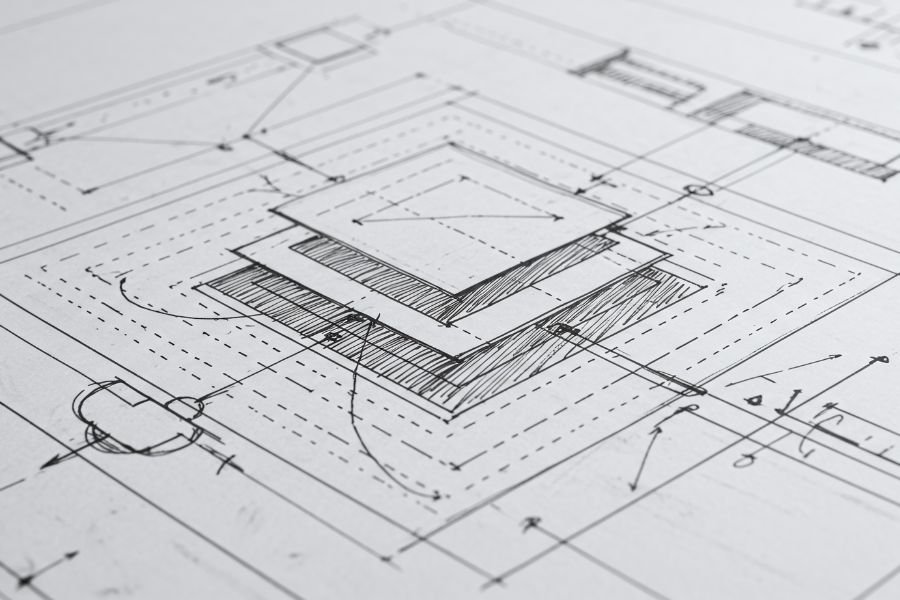
Every pool begins as a conversation.
You meet with your pool contractor, and they ask questions that feel simultaneously exciting and overwhelming. What’s your budget? How will you use the pool—lap swimming, entertaining, watching the kids play? Do you want a spa? Lighting? A tanning ledge?
These aren’t idle questions. They’re the foundation of everything that comes next.
During this phase, you’ll work with designers to create the pool layout. You’ll select finishes, materials, and features. You’ll review 3D renderings that make your backyard look like something out of a resort magazine. And you’ll make decisions—lots of them—about things you never knew you’d need to have opinions on.
How much does it cost to build a pool with all these custom features? That question gets answered here, during planning, when you’re balancing your wish list against your budget. A custom pool builder worth their salt will help you prioritize, showing you where to invest for maximum impact and where you can save without sacrificing quality.
This stage matters more than you think. A rushed design phase leads to change orders later, and change orders lead to delays. The more clarity you have upfront, the smoother the construction process flows.
Stage Two: Permits and Approvals (1-4 Weeks)
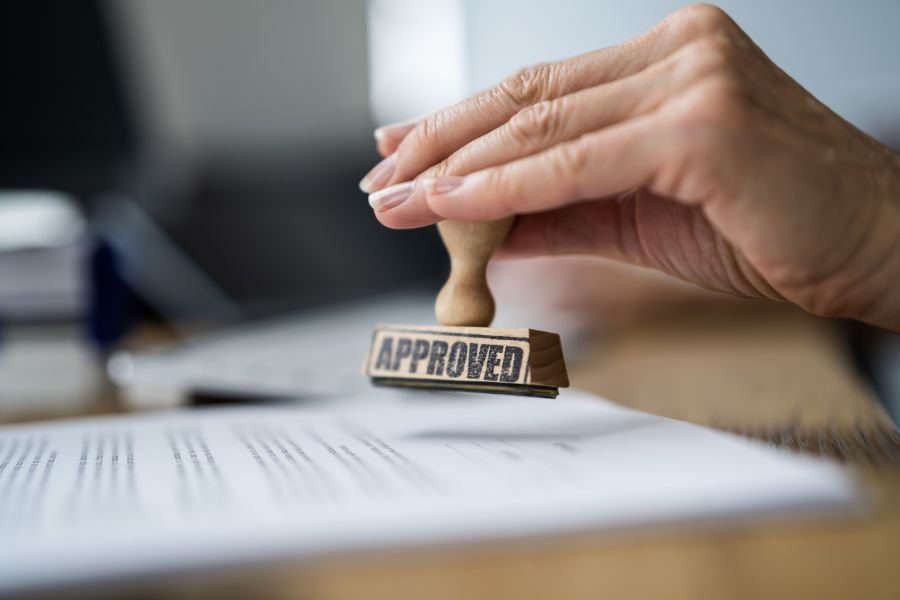
Nobody dreams about permits.
But permits are the unsexy backbone of every legitimate pool construction project. Your contractor will need approval from local building departments, and depending on where you live, this can take anywhere from one week to a full month.
Some municipalities move quickly. Others… don’t.
HOA approval can add additional time, especially if your neighborhood has architectural review boards that meet monthly. And if you’re in an area with strict setback requirements or environmental considerations, expect the permit process to lean toward the longer end of that timeline.
The good news? This stage runs parallel to other preparations. While paperwork winds through bureaucratic channels, your contractor can be finalizing material orders, scheduling crews, and preparing your site for excavation.
A professional pool contractor handles permits on your behalf, but it’s worth understanding this phase exists. It’s the reason you can’t just wake up on a Monday and have a crew digging your pool by Friday.
Stage Three: Excavation and Layout (1-3 Days)
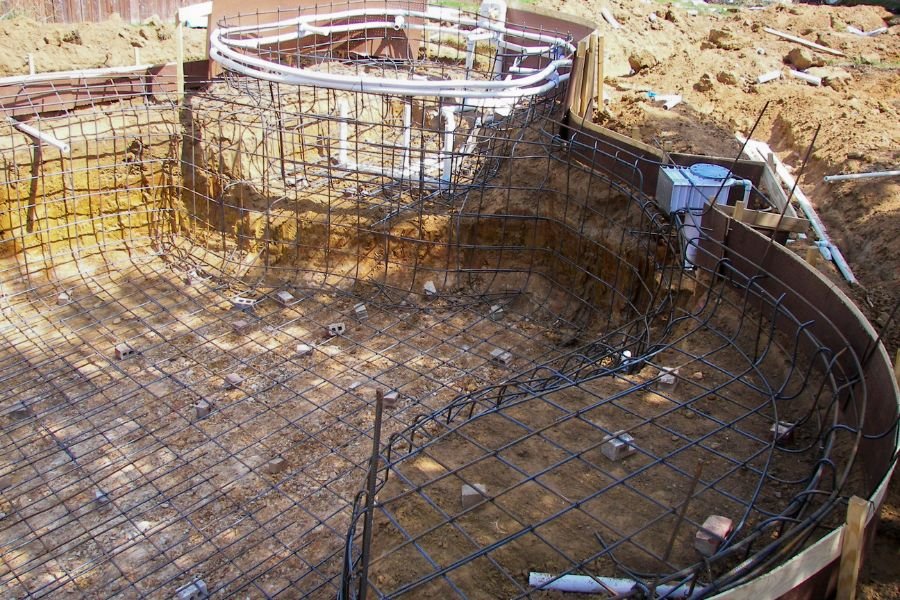
Then, suddenly, everything gets real.
Heavy equipment rolls into your backyard. Stakes and spray paint mark the exact dimensions of your pool. And within a day or two, there’s a massive hole where your lawn used to be.
Excavation is dramatic and fast. It’s the stage that makes your neighbors stop their morning walks to watch. It’s the stage where your kids press their faces against the window, captivated.
The speed of excavation depends on your soil conditions and access. Rocky terrain takes longer. Tight backyard access that requires smaller equipment slows things down. But in general, most excavation is completed within a few days.
After the digging comes layout verification—making sure the depths, dimensions, and slopes match the approved design. This is also when any necessary groundwork for plumbing and electrical gets started.
Stage Four: Steel and Plumbing (3-7 Days)

Once the hole exists, the skeleton of your pool takes shape.
Steel rebar is installed, creating the structural framework that will reinforce the concrete. Plumbing lines are laid—the circulation system that will keep your water clean and moving. Electrical conduits go in, preparing for lights, pumps, and any automation systems you’ve chosen.
This stage requires precision. Plumbing mistakes made here are expensive and complicated to fix later. That’s why experienced pool builders take their time, double-checking layouts, testing for leaks before concrete goes in, ensuring everything meets code.
It’s also when inspections typically happen. Building inspectors verify that steel placement, plumbing work, and electrical rough-ins meet local requirements. These inspections are necessary checkpoints—and they can add a day or two to your timeline if the inspector’s schedule is backed up.
Stage Five: Shell Construction (1-2 Weeks)

The shell is where your pool stops being a concept and becomes a physical thing.
For gunite or shotcrete pools—the most common type for custom designs—this means spraying a mixture of concrete and sand over the steel framework. The application itself happens in a single day, usually taking four to eight hours depending on pool size.
But then comes curing. Concrete needs time to harden properly, and that means waiting. The shell typically cures for at least seven to ten days before work continues.
For fiberglass pools, this stage looks different—the pre-manufactured shell is delivered and set into the excavated hole in a matter of hours. It’s one reason fiberglass installation tends to be faster overall, though it offers less customization than gunite.
The cost to build a pool varies significantly based on shell type. Gunite allows for completely custom shapes and sizes but requires more time. Fiberglass is faster but limits design options. Understanding these trade-offs helps you make informed decisions during the planning phase.
Stage Six: Tile and Coping (3-5 Days)
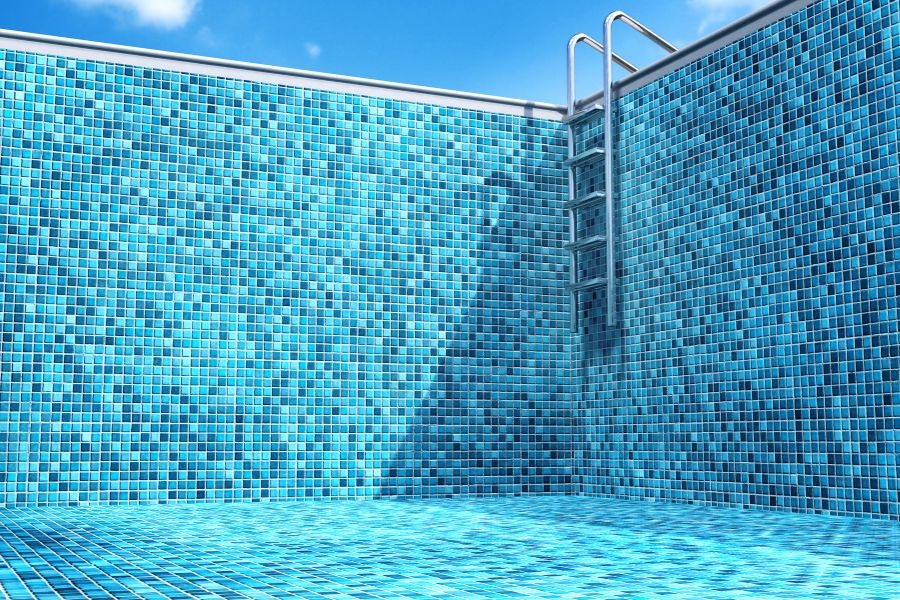
While the shell cures, attention turns to the pool’s edges and waterline.
Coping—the cap that sits atop the pool wall—gets installed first. Then comes tile work along the waterline. These are the details that define your pool’s aesthetic. The materials you choose here, from natural stone to glass tile to travertine, impact both appearance and budget.
Tile installation is methodical work. Each piece must be precisely placed, grouted, and sealed. Rushing this stage leads to uneven lines and premature wear. A quality installation here means your pool looks pristine for years.
This is also when any raised spa walls, water features, or vanishing edges get their finish details. It’s gratifying work—the point where the pool starts looking like the renderings you fell in love with during design.
Stage Seven: Interior Finish (1-2 Weeks)
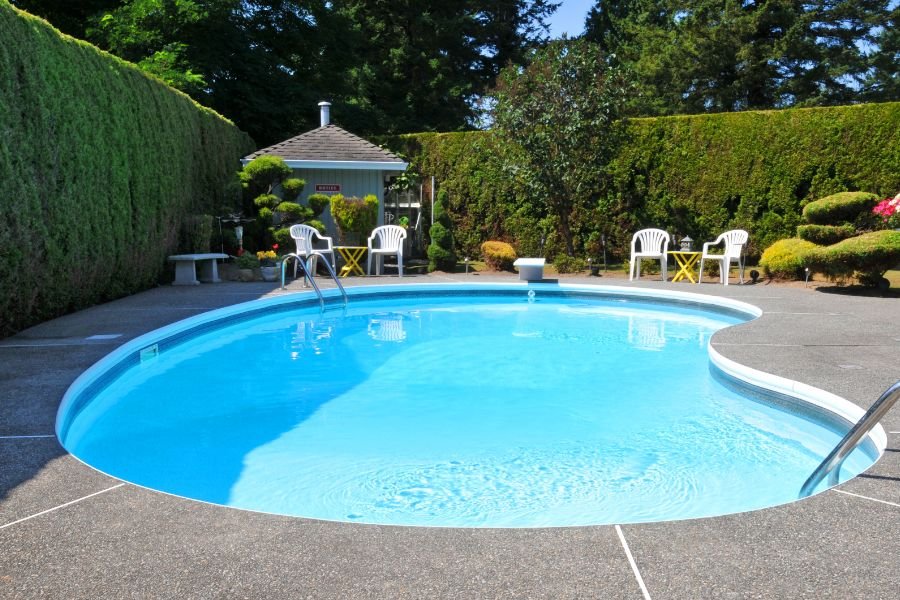
The interior finish is what you’ll touch, see, and feel every time you swim.
For plaster finishes, this typically happens in a single day. A crew applies a smooth coat of plaster—white, colored, or mixed with pebbles or quartz—over the gunite shell. It’s skilled work, requiring speed and precision since plaster has a limited working window before it begins to set.
After application comes the fill. Your pool gets filled with water immediately—both to shape the plaster as it cures and to prevent cracking. This is the stage where you’ll likely see your pool full for the first time, even though you can’t swim yet.
Plaster needs time to cure properly, usually seven to fourteen days. During this period, you’ll need to brush the interior daily and maintain specific water chemistry. It’s maintenance-intensive, but necessary for a finish that lasts decades.
Stage Eight: Decking and Landscaping (1-2 Weeks)

Your pool might be ready, but your backyard isn’t finished.
Decking—the surface surrounding the pool—comes next. Whether you’ve chosen pavers, stamped concrete, travertine, or natural stone, installation takes time. Each section must be leveled, compacted, and properly graded for drainage.
This stage transforms the construction site back into a backyard. It’s when the dirt piles disappear, when sod or landscaping gets installed, when the space starts feeling like somewhere you’d actually want to spend a Saturday afternoon.
Many homeowners underestimate how much decking impacts the overall project timeline and budget. It’s not just functional—it’s a significant design element. The materials you choose here affect both how long construction takes and how much the complete project costs.
Stage Nine: Equipment Installation and Startup (3-5 Days)
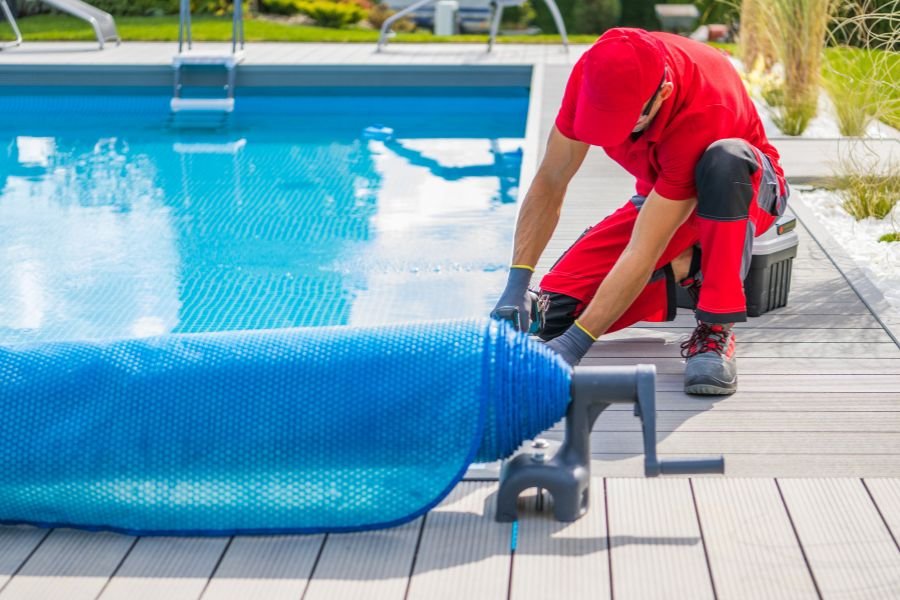
The final stage is all systems go.
Pool equipment—pumps, filters, heaters, automation systems—gets installed and connected. This is when technology meets water, when all those plans and purchases come together into a functioning circulation system. Startup involves balancing water chemistry, testing all equipment, training you on maintenance, and ensuring everything operates correctly. A thorough startup by experienced professionals prevents problems down the road.
Modern pool automation systems allow you to control temperature, lighting, and cleaning schedules from your phone. Setting these up and teaching you how to use them takes time, but it’s time well spent. The difference between a pool you enjoy and one that becomes a chore often comes down to how well you understand your equipment.
What Can Slow Things Down
Even the best-planned projects hit delays.
Weather is the most common culprit. Rain halts concrete work. Extreme heat affects plaster curing. Cold temperatures stop construction entirely in many climates. Most pool builders build buffer time into their estimates, but Mother Nature doesn’t operate on anyone’s schedule.
Permit delays can push timelines back weeks. Supply chain issues—particularly for custom materials like imported tile or specialized equipment—create waiting periods. Inspection scheduling when building departments are backlogged adds days.
Change orders are another timeline killer. If you decide halfway through construction that you want to add a spa or change your coping material, expect delays while new materials are ordered and crews are rescheduled.
The question of how much does it cost to build a pool gets more complicated when delays occur. Some costs remain fixed, but extended timelines can increase labor expenses and create scheduling challenges that ripple through a contractor’s other projects.
Working with a Custom Pool Builder Makes the Difference
The timeline matters, but so does who’s managing it.
A custom pool builder with experience navigating local permit processes, established relationships with subcontractors, and efficient project management systems keeps your project moving forward. They anticipate problems before they become delays. They communicate clearly about where you are in the process and what’s coming next.
Premium builders often complete projects faster than budget contractors—not because they rush, but because they have systems in place, skilled crews on staff, and the resources to handle unexpected challenges without grinding to a halt.
When evaluating the cost to build a pool, consider the value of a smooth, well-managed process. The cheapest bid often comes with the longest timeline, the most stress, and the least certainty about when you’ll actually be swimming.
Setting Realistic Expectations
Here’s what I wish someone had told me: building a pool is less like buying a product and more like orchestrating an event.
It requires patience, flexibility, and trust in the professionals you’ve hired. It means accepting that some things—weather, permit offices, material deliveries—sit outside anyone’s control.
But it also means understanding that each stage has a purpose. The waiting isn’t arbitrary. Concrete needs time to cure. Plaster needs time to set. Rushing these processes doesn’t save time—it compromises quality.
Most pool construction in ideal conditions takes ten to twelve weeks. Add a week or two on either end for planning and permits. Build in buffer time for weather or unexpected delays. That gives you a realistic fifteen-week window from decision to swim time.
The Math You Need to Do
If you’re dreaming of swimming by Memorial Day, you need to start the conversation with pool contractors by February at the latest.
Planning for a summer birthday party in July? Begin in March.
Want to enjoy your pool for most of the season? Start thinking about this in January or February, even if you live in a warm climate where construction can happen year-round.
The cost to build a pool isn’t just measured in dollars—it’s measured in time, planning, and patience. Understanding the timeline helps you make better decisions about when to start, what to prioritize, and how to set expectations for your family.
What Aqua Elite Pools™ Clients Experience
Companies that specialize in luxury pool construction approach timelines differently than builders rushing through projects to maximize volume.
Aqua Elite Pools™, for example, builds buffer time into every phase, communicates proactively about potential delays, and maintains quality standards that sometimes mean taking an extra few days rather than cutting corners. Their clients know exactly where they are in the process at any given moment—and more importantly, they know why each stage takes as long as it does.
That transparency matters. Not knowing why your pool isn’t finished yet creates anxiety. Understanding that your contractor is waiting for a critical inspection or allowing proper cure time creates confidence.
The First Swim Is Worth the Wait
When you finally lower yourself into that water—cool and clean and perfectly balanced—you won’t be thinking about permits or plaster curing times. You’ll be thinking about summer evenings and weekend pool parties.
You’ll be thinking about teaching your kids to swim in your own backyard. You’ll be thinking about how you ever lived without this. The timeline disappears in that moment.
But until you get there, understanding the journey makes the waiting easier. Knowing that those twelve weeks aren’t arbitrary makes the process feel less uncertain. Recognizing that quality construction takes time helps you choose the right builder rather than the fastest one.
Building a pool is an investment—in your home, in your family’s lifestyle, in years of memories you haven’t made yet. The timeline is just the path you take to get there.
And like most worthwhile things, it’s worth taking the time to do it right.
Ready to Start Your Pool Project?
Understanding the timeline is the first step. The next step is talking with experienced custom pool builders who can guide you through the process with transparency and expertise. Because the best pools aren’t just well-built—they’re well-planned, from the very first conversation to that first perfect summer swim.
